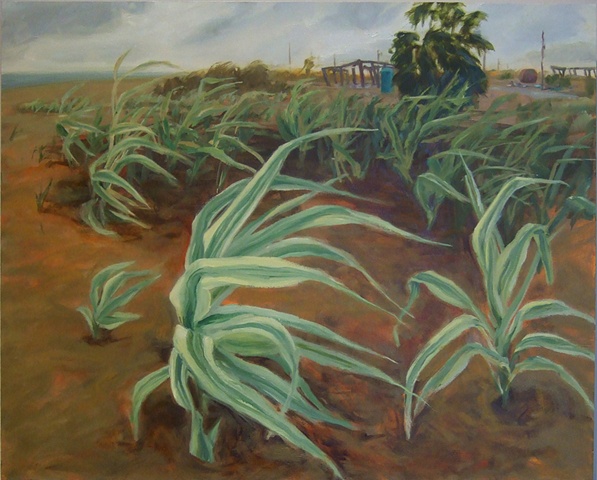invasive species
Arundo donax
Giant reed is native to Eurasia, and was introduced into the United States in the early 1800s as an ornamental and for erosion control in drainage canals in the Los Angeles area. It has since spread throughout the southern US.
Here, it is seen re-growing on Texas’ Bolivar peninsula, less than a year after the area was devastated by Hurricane Ike.
Giant reed chokes riversides and stream channels, crowds out native plants, interferes with flood control, increases fire potential, and reduces habitat for wildlife, including the Least Bell's vireo, a federally endangered bird. Giant reed can float miles downstream where root and stem fragments may take root and initiate new infestations. Due to its rapid growth rate and vegetative reproduction, it is able to quickly invade new areas and form pure stands at the expense of other species. Once established, giant reed has the ability to outcompete and completely suppress native vegetation.
Giant reed has a long history of use by humans, including the reeds for woodwind instruments, which are still made from its culms.
